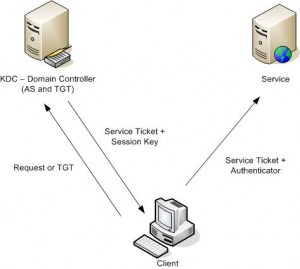Cisco Networkers Online – Introduction to MPLS
This video (1 hour 52 minutes in length) is an excellent tutorial / introduction / refresher on the subject of MPLS and MPLS VPN.
Read more…
This video (1 hour 52 minutes in length) is an excellent tutorial / introduction / refresher on the subject of MPLS and MPLS VPN.
Read more…
A nice little introduction to network monitoring (provided by my employer – registration required for obtaining the free download). This book does lean slightly towards using Cascade products to provide monitoring, troubleshooting and analytics – BUT I’m happy to say that it does remain a nice little read for anyone who has an interest in network monitoring. Read more…
RFC 2597 defines four Assured Forwarding groups, denoted by the letters “AF” followed by two digits: Read more…
Concurrent writes to a single file are not desirable in any operating system. To prevent this, most operating systems use locks to guarantee that only one process can write to a file at a time. Operating systems traditionally lock entire files, although newer ones allow a range of bytes within a file to be locked. If another process attempts to write to a file (or section of one) that is already locked, it will receive an error from the operating system and will wait until the lock is released. Read more…
This table compares QoS values for IP precedence, Differentiated Services Code Point (DSCP) and Multiprotocol Label Switching (MPLS) Experimental (EXP) values along with standard values used in Cisco IOS Software for configuration. Read more…
 The Kerberos authentication method originated at the Massachusetts Institute of Technology in the 1980s.
The Kerberos authentication method originated at the Massachusetts Institute of Technology in the 1980s.
It was part of a project called Athena that involved integrating the computers on the MIT campus, which ran on different operating systems, in a network that offered single sign-on (SSO).
At that time, most UNIX systems allowed users to access their resources as long as they had an account name and password. Read more…
An aide-memoir. This example uses dual distribution layer switches for load-balancing VLAN traffic using MST: Read more…
Server Message Block (SMB) Protocol is the file sharing protocol used by default on Windows-based computers. SMB 1.0 was designed for early Windows network operating systems such as Microsoft LAN Manager and Windows for Workgroups, but until Windows Server 2008 and Vista, all Microsoft-based operating systems continued to use it more or less in its original format.
SMB 2.0 was introduced in Windows Vista and Windows Server 2008. SMB 2.0 is designed for the needs of the next generation of file servers. Windows Server 2008 and Windows Vista support both SMB 1.0 and SMB 2.0 in order to preserve backward compatibility. Read more…
Moving your applications into “the cloud” means that round-trip times and protocol and application latency can become a serious issue.
The Riverbed Virtual Steelhead Appliance, a software version of Riverbed Technology’s WDS solution is worth considering:
Read more…
Bob Gilbert discusses how Riverbed Technology RSP provides “one-box” solution for local delivery of virtualized industry-standard applications, speeding up your network: